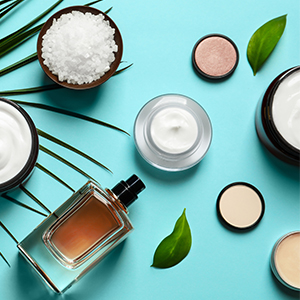“Clean”, “Natural”, or “Green” are some terms used for the rapidly expanding movement in beauty and personal care, becoming a force to be reckoned with for the brands and retailers alike. In 2017, the natural personal care market records over 8% growth, with some categories outperforming the conventional market by more than three times. What is behind this robust growth? Our Natural Personal Care aims to take a closer look at the United States and Japan markets, with robust analysis and a deep dive into trends, brands, product categories, and outlook for the next five years.
Let’s look at the key highlights expected to arise in our market analysis:
What are the most important categories in the Natural personal care market?
Advances are made in all categories. Skin care constitutes the largest product class of the natural personal care market, but, makeup records the fastest growth of almost 10%. The category is driven by the expanding distribution of brands such as Mineral Fusion that were primarily sold in natural health stores.
Can you provide more insights into the distinction in the market of natural-inspired vs. truly-natural?
Kline’s custom-designed Natural Rating System (NRS) allows us to rank naturally positioned brands into natural-inspired vs. truly natural. Each brand is rated on a scale of 1 to 10, with 1 being highly synthetic and 10 being completely natural or organic. This allows us to divide the whole market into truly-natural vs. natural-inspired. Moreover, our latest digital product tracker, Amalgam, can tell how such brands and products rank online based on the data collected from major online retailers such as Amazon, Target, and Ulta.
Can you talk about what we can expect to see in the coming year in the beauty retailing landscape?
Increasing number of retailers are expected to allocate shelf-space to more naturally positioned brands. We already see specialty brands such as Sephora putting a “clean” label on brands that are positioned as natural. Mass retailers are emphasizing on the importance of “clean” and natural products as well. In fall 2017, Walgreens naturally positioned its color cosmetics line called Found while CVS announces the removal of all parabens, phthalates, and formaldehyde donors in products within the CVS Health, Beauty 360, Essence of Beauty, Promise Organic, and Blade stores brand product lines.
Any other interesting trends that you can talk about?
One other important aspect that we are looking for is transparency. In January 2018, CVS announces that it will end retouching in advertisements for beauty products and will partner with L’Oréal, CoverGirl, and Coty on this endeavor. The retailer also announces the implementation of a CVS Beauty Mark on images that have not been materially altered. To coincide with this initiative, CVS launches “Beauty in Real Life” campaign in April 2018, which features untouched and unaltered photos of women wearing cosmetics.
To learn more about this market’s trends, dynamics, competitive landscapes, and factors driving purchases of natural products in the United States and Japan, look-out at our forthcoming Natural Personal Care report.

